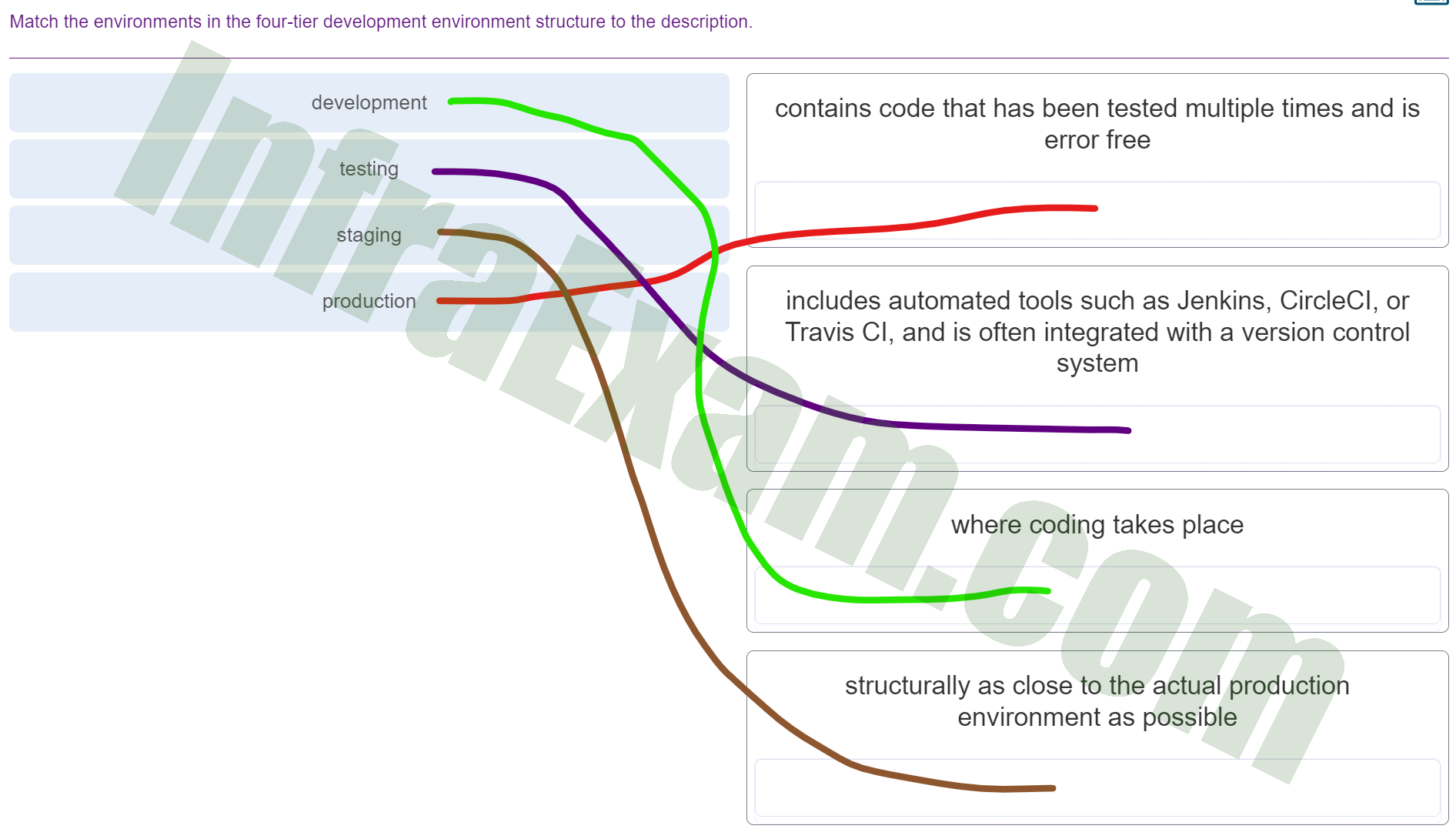| Answers Explanation & Hint:
Here’s an explanation for each of the environments in the four-tier development environment structure and their corresponding descriptions:
Production Environment:
- Description: Contains code that has been tested multiple times and is error-free.
- Explanation: The production environment is where the final version of the software or application is deployed for actual use by users. It’s expected to be stable, reliable, and thoroughly tested to ensure that it functions correctly and doesn’t contain any critical errors.
Testing Environment:
- Description: Includes automated tools such as Jenkins, CircleCI, or Travis CI, and is often integrated with a version control system.
- Explanation: The testing environment is where software undergoes various types of testing to identify and fix bugs and issues. Automated tools like Jenkins, CircleCI, or Travis CI are used to automate the testing process and ensure that code changes do not introduce new problems. Version control integration helps manage and track changes in the codebase.
Development Environment:
- Description: Where coding takes place.
- Explanation: The development environment is where software developers write, modify, and test code. It’s the primary workspace for developers, where they create new features, fix bugs, and make improvements to the software.
Staging Environment:
- Description: Structurally as close to the actual production environment as possible.
- Explanation: The staging environment is a near-replica of the production environment. It serves as a final testing ground before deploying code to production. By mimicking the production setup, developers can identify any issues that may arise when the software is deployed to the live environment.
These different environments serve distinct purposes within the software development lifecycle, helping to ensure that the software is developed, tested, and deployed in a controlled and efficient manner, ultimately leading to a reliable and high-quality end product. |
